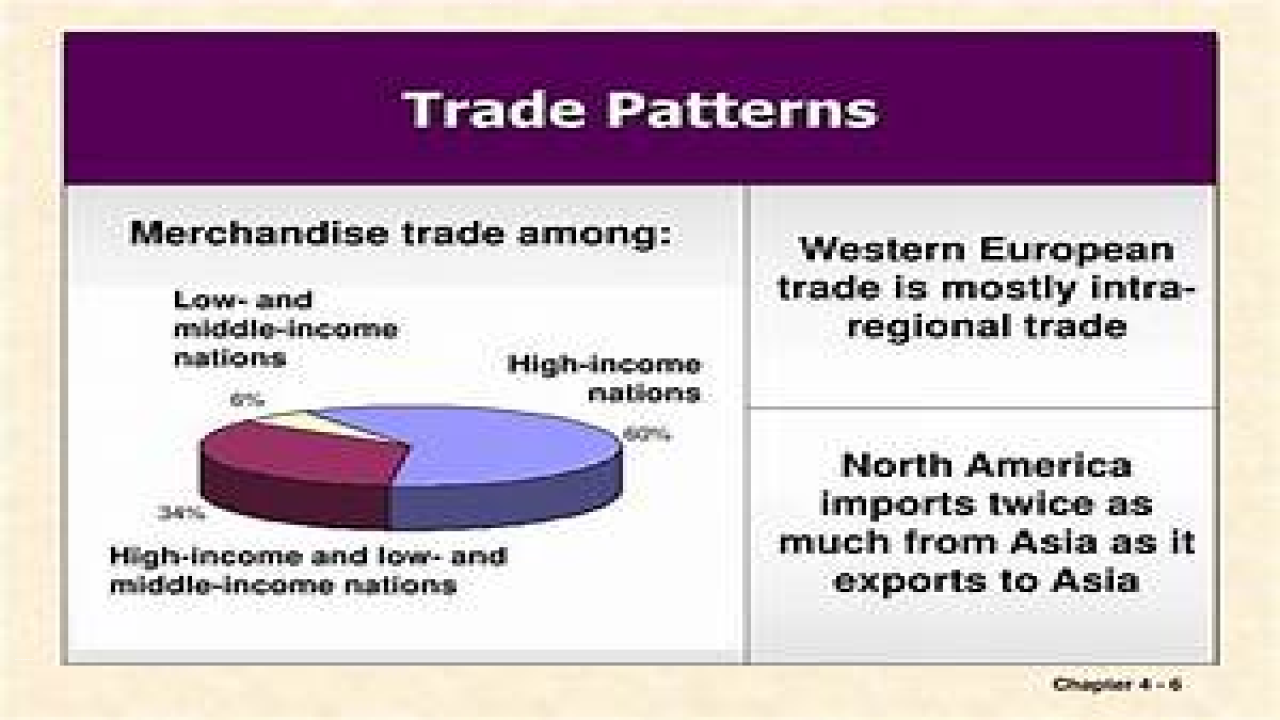Patterns of World Trade
World trade refers to the exchange of goods and services between different countries. The patterns of world trade have evolved over time, influenced by factors such as technology, politics, and economic development.
Meaning of Patterns of World Trade
Patterns of world trade refer to the distribution of exports and imports among countries. The patterns of world trade are influenced by factors such as the level of economic development, natural resources, political factors, and technological advancements. The patterns of world trade can be analyzed using indicators such as the trade balance, export intensity, and import intensity.
History of Patterns of World Trade
The history of patterns of world trade can be traced back to the ancient Silk Road trade routes, which connected China to Europe and the Middle East. The Silk Road facilitated the exchange of goods such as silk, spices, and precious metals. During the colonial era, European powers established trade routes with their colonies in Africa, Asia, and the Americas, leading to the transfer of goods such as sugar, tobacco, and cotton. In the 20th century, the rise of globalization and the growth of international organizations such as the World Trade Organization (WTO) have facilitated the growth of world trade.
Types of Patterns of World Trade
The patterns of world trade can be classified into three main types: intra-industry trade, inter-industry trade, and resource-based trade.
- Intra-Industry Trade: This refers to the exchange of similar goods between countries. Intra-industry trade is common among developed countries that produce similar goods, such as automobiles or electronics.
- Inter-Industry Trade: This refers to the exchange of dissimilar goods between countries. Inter-industry trade is common between developed and developing countries, where the developed country exports manufactured goods, and the developing country exports raw materials.
- Resource-Based Trade: This refers to the exchange of natural resources between countries. Resource-based trade is common among developing countries that export raw materials, such as oil or minerals, to developed countries.
Examples of Patterns of World Trade
Here are some examples of the patterns of world trade:
- Intra-Industry Trade: The exchange of automobiles between Japan and the United States is an example of intra-industry trade. Both countries produce similar goods, but there are differences in quality, design, and brand identity.
- Inter-Industry Trade: The exchange of textiles between Bangladesh and the United States is an example of inter-industry trade. Bangladesh exports textiles, which are used in the garment industry in the United States.
- Resource-Based Trade: The exchange of oil between Saudi Arabia and the United States is an example of resource-based trade. Saudi Arabia exports oil, which is used as a primary source of energy in the United States.
Issues with Patterns of World Trade
Despite the benefits of world trade, there are several issues associated with patterns of world trade, including:
- Trade Imbalances: Trade imbalances occur when a country’s imports exceed its exports or vice versa. Trade imbalances can lead to economic instability and can contribute to global economic imbalances.
- Protectionism: Protectionism refers to the use of trade barriers, such as tariffs or quotas, to protect domestic industries from foreign competition. Protectionism can lead to reduced competition, higher prices, and reduced consumer choice.
- Labor Exploitation: Labor exploitation refers to the use of cheap labor in developing countries to produce goods for export to developed countries. Labor exploitation can lead to poor working conditions, low wages, and child labor.
- Environmental Concerns: World trade can have a negative impact on the environment, such as pollution, deforestation, and climate change. The transport of goods over long distances can also contribute to greenhouse gas emissions and climate change.
- Dependency: Dependency refers to the economic dependence of developing countries on developed countries for exports. Developing countries may be overly dependent on exports of a few commodities, making them vulnerable to fluctuations in global commodity prices.
- Inequality: Patterns of world trade can lead to unequal distribution of benefits, both within and between countries. Developed countries may have an advantage in accessing global markets, leading to unequal economic growth and income distribution.
- Intellectual Property: Patterns of world trade can also lead to issues related to intellectual property rights, such as patent and copyright infringement. Developed countries often hold the majority of patents and intellectual property rights, while developing countries may not have the resources to protect their intellectual property.


